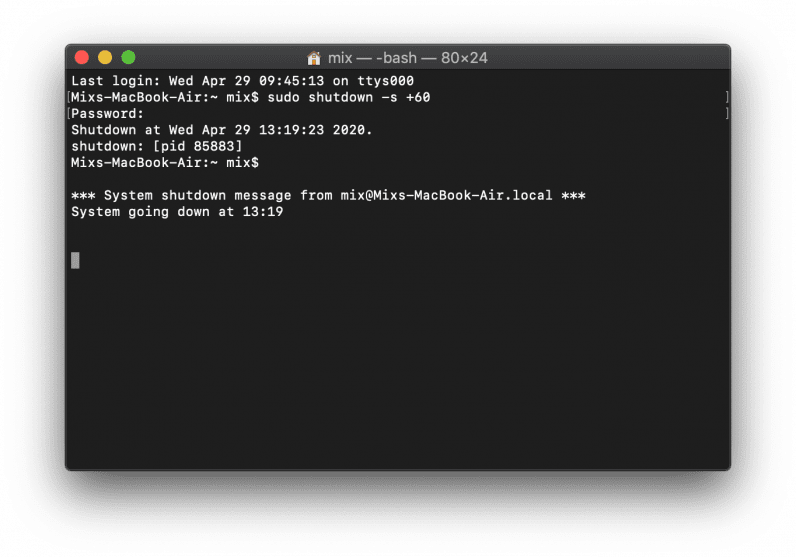

The number is a cryptic shutdown code representing the cause of the shutdown.īelow are a list of shutdown causes on macOS and OS X with a description of the code and explanations for what the codes mean, including some initial troubleshooting steps.
#SHUTDOWN TIMER MAC MAC#
If Mac has shutdown in the time specified, you should see messages such as Previous Shutdown Cause: followed by a number. Lastly, in the info window for the shutdown timer, click the logo in the top left corner to highlight it, then press command + V to paste the image.Log show -predicate 'eventMessage contains "Previous shutdown cause"' -last 24h Code language: JavaScript ( javascript ) Open the image you want to use in Preview and press command + A to select all and command + C to copy. This opens the info page for the shortcut. If you want to replace the default icon of an executable file, click to highlight the icon and press command + I. Now if you double-click the shutdown shortcut on your desktop, Terminal will open, prompting you to enter your user password. Next, type chmod 774 shutdown and press enter. Open terminal and change directory to Desktop by typing cd /Users//Desktop and press enter. Before clicking Save, make sure to uncheck the box beside If no extension is provided, use ".txt". Click Save.įinally, we need to make the file executable. Save the file to Desktop and give it a simple name, like shutdown. Press return twice, and on the third line, enter your shutdown timer command, such as sudo shutdown -h +15. This tells the operating system that the command should be executed using Bash. On the very top line of the text file, type #!/bin/bash. If the document is not in plain text, press command + shift + T to switch to plain text.Ī partially complete script for a shutdown timer. To do this, open TextEdit and click New Document. If you find yourself using the same shutdown timer often, you may want to create a desktop shortcut for the timer. If you wish to cancel a shutdown timer, take note of its pid and enter this command in Terminal: sudo kill. It will also give you the process ID, also known as a pid, which is a three- to four-digit number. The shutdown timer will then be created, giving you the exact time and date that the shutdown/restart/sleep process will occur.

#SHUTDOWN TIMER MAC PASSWORD#
When you enter one of these commands, you will need to enter the password for the user account and press return.

Read more: If you're looking for a shutdown timer on Windows, there's a quick tip for that, as well. But you don't need any dedicated software. If you ever find yourself in a situation where you want to shut down your Mac after a time-consuming process has finished, such as downloading and installing updates, or exporting a video, what you need is a shutdown timer.Ī few applications for this exist in the Mac App Store, such as Timer Boom and the aptly named Shutdown Timer.


 0 kommentar(er)
0 kommentar(er)
